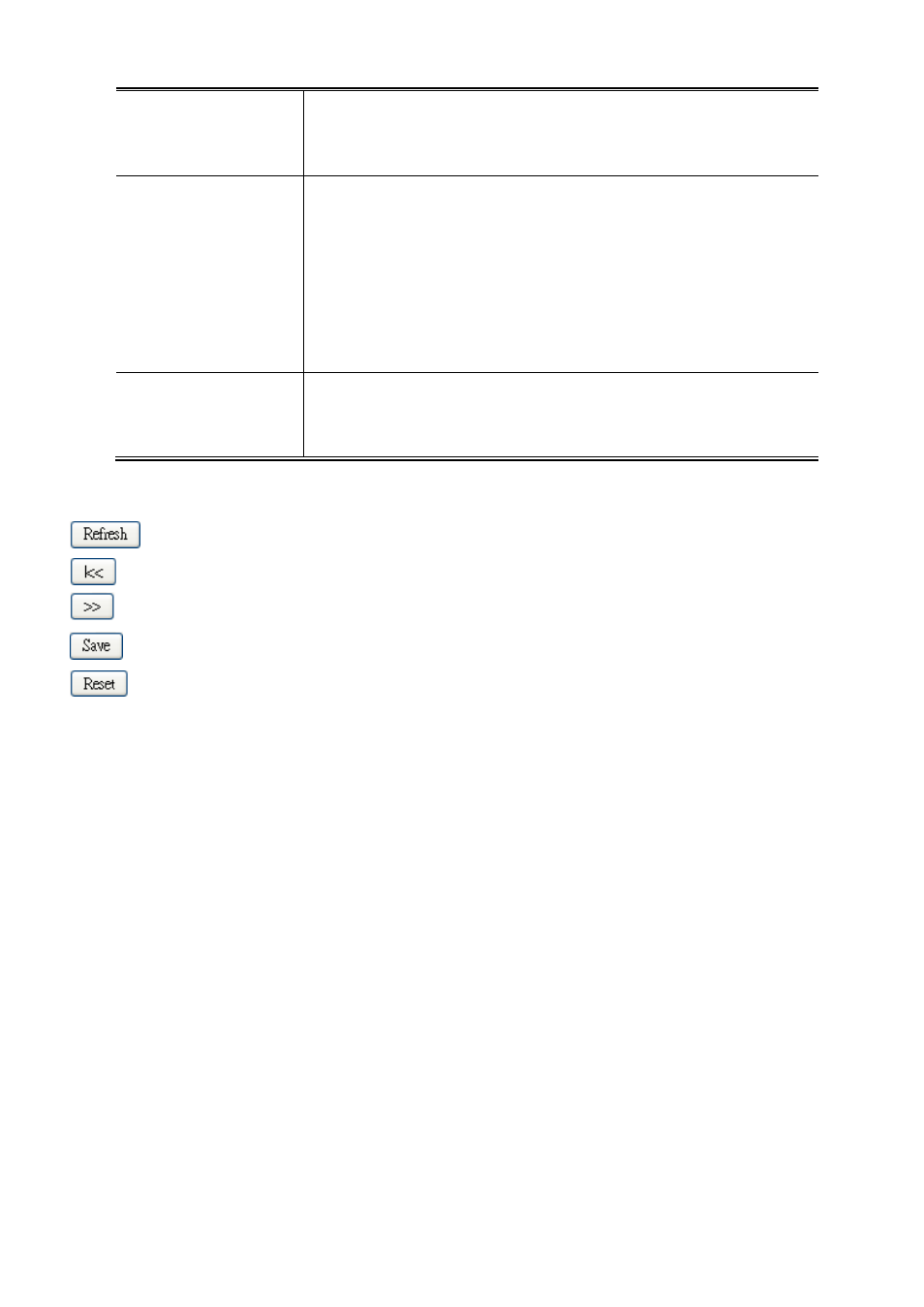10 mld snooping port group filtering – PLANET WGSD-10020 User Manual
Page 167

User’s Manual of WGSD-10020 Series
167
Maximum Response Code inserted into the periodic General Queries. The
allowed range is 0 to 31744 in tenths of seconds, default query response interval
is 100 in tenths of seconds (10 seconds).
•
LLQI
Last Listener Query Interval. The Last Listener Query Interval is the Maximum
Response Delay used to calculate the Maximum Response Code inserted into
Multicast Address Specific Queries sent in response to Version 1 Multicast
Listener Done messages. It is also the Maximum Response Delay used to
calculate the Maximum Response Code inserted into Multicast Address and
Source Specific Query messages. The allowed range is 0 to 31744 in tenths of
seconds, default last listener query interval is 10 in tenths of seconds (1 second).
•
URI
Unsolicited Report Interval. The Unsolicited Report Interval is the time between
repetitions of a node's initial report of interest in a multicast address. The allowed
range is 0 to 31744 seconds, default unsolicited report interval is 1 second.
Buttons
: Refreshes the displayed table starting from the "VLAN" input fields.
: Updates the table starting from the first entry in the VLAN Table, i.e. the entry with the lowest VLAN ID.
: Updates the table, starting with the entry after the last entry currently displayed.
: Click to save changes.
: Click to undo any changes made locally and revert to previously saved values.
4.8.10 MLD Snooping Port Group Filtering
In certain switch applications, the administrator may want to control the multicast services that are available to end users. For
example, an IP/TV service based on a specific subscription plan. The MLD filtering feature fulfills this requirement by restricting
access to specified multicast services on a switch port, and MLD throttling limits the number of simultaneous multicast groups a
port can join.
MLD filtering enables you to assign a profile to a switch port that specifies multicast groups that are permitted or denied on the
port. A MLD filter profile can contain one or more, or a range of multicast addresses; but only one profile can be assigned to a
port. When enabled, MLD join reports received on the port are checked against the filter profile. If a requested multicast group is
permitted, the MLD join report is forwarded as normal. If a requested multicast group is denied, the MLD join report is dropped.
MLD throttling sets a maximum number of multicast groups that a port can join at the same time. When the maximum number of
groups is reached on a port, the switch can take one of two actions; either “deny” or “replace”. If the action is set to deny, any
new MLD join reports will be dropped. If the action is set to replace, the switch randomly removes an existing group and
replaces it with the new multicast group. The MLD Snooping Port Group Filtering Configuration screen in
Figure 4-8-13
appears.
